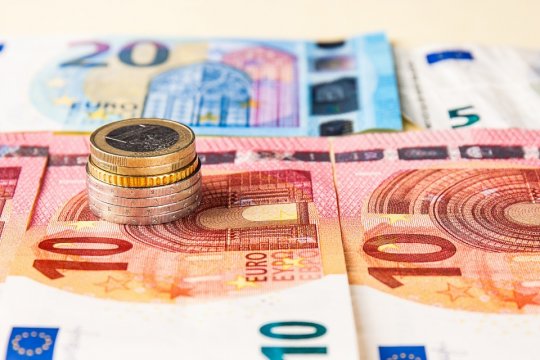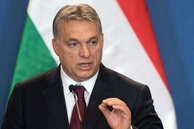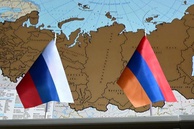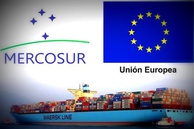The common European currency – the euro – came into being 20 years ago. Since January 1, 1999, the euro has been widely used in cashless money transfers. On January 1, 2002, banknotes and coins were introduced into circulation. How did the European countries benefit from the single currency? How many profited from its introduction?
In the early 1990s, the European Community entered a new stage of development which was characterized by a transition to a higher level of integration within it and expansion to include more members. This was provided by the Treaty on European Union, which was signed on February 7, 1992 in the Dutch city of Maastricht and entered into force on November 1, 1993. The Maastricht agreements and the subsequent decisions of the EU’s governing bodies – the European Council and the Council of the EU –formed a groundwork for a gradual, stage-by-stage creation of a monetary union and the introduction of a single currency, the euro.
At the time the decision on the introduction of the euro came into effect it was believed that the main objectives of the transition to a single monetary policy and the replacement of national banknotes with a single European one were the following. First of all, a monetary union was supposed to put the finishing touches to the formation of a common market and was to transform the EU territory into an economic space with equal opportunities for all players. A single currency was expected to facilitate the transition of the EU to a common economic policy, which, in turn, was seen as indispensable for moving to a new level of political integration. Many also viewed a single currency as vital for cementing European integration and a symbol of the economic and political integrity of the region. It was assumed that the euro would keep European countries "in the same harness" even in times of crisis and would help them to overcome differences and even resist outbursts of nationalism [i].
The second goal was to prevent losses caused by continuous fluctuations in the rates of Western European currencies. Once the euro was established, risk payments for possible losses in different-currency transactions became a thing of the past. It was assumed that stable and low interest rates would bring down inflation and stimulate economic growth. Thirdly, it was thought that fixed exchange rates within the euro zone with no more fluctuations would boost investment activity and, as a result, would improve the situation on the labor market. In addition, a better economic performance was to make it easier for countries to enter the EU and adapt to the new reality. A better economic performance was supposed to make European products more competitive in world markets.
Fourth, a single currency was supposed to significantly cut circulation costs. At the end of the 1990s, the existence of various national currencies cost the EU countries 20-25 billion ECU [ii] (26-33 billion dollars) annually, including the cost of keeping records of currency transactions, insuring currency risks, conducting exchange operations, drawing up the price lists in various currencies, etc. Finally, fifthly, the initiators of the single currency hoped that the euro would become one of the international reserve currencies. The introduction of the euro was supposed to change the balance of strengthe between the United States and united Europe in favor of the latter. In the long run, it boiled down to ensuring more independence of the EU economic policy since interest rates on long-term loans would be less dependent on American ones.
What is happeningn at present? Not surprisingly, the greatest difficulties emerged while grappling with the most pressing and large-scale agenda involving the ambitious plans of the political and economic transformation of the EU and the strengthening of its global geo-economic role. Indeed, since the late 1990s, the economic and financial spheres of the EU have undergone dramatic changes. In 2004 and 2007, the majority of Central and Eastern European countries joined the Union (an increase in social dumping). The current EU "bears little resemblance" to that of 20 years ago. "Not only the currency has become different, but the entire European economy has changed."
Nevertheless, as predicted by those who criticized the approved version of transition to a single European currency, chances for meeting the criteria of eurozone membership in case the global economy followed an unfavorable scenario are pretty slim for most countries of the eurozone. As economic and financial crises sweep Europe one after another, the presence of the euro and the unprecedentedly high level of the European Central Bank’s autonomy and its extensive powers are restricted by the “possibiolity of influencing the economy” of separate states. Since inflation rates vary from country to country, the interest rate suggested by the ECB (about 2%) turns out to be too low for countries with high inflation (which leads to financial bubbles) and too high for countries with low inflation (which has a negative impact on investments).
As a result, the economic slowdown in European economies in the 2000s through 2010s led to increases in budget deficits. According to the requirements of the eurozone, governments have to raise taxes or cut spending, even if it damages national economy. Formally, there exists a procedure to tackle economic upheavals in this or that country of the eurozone to minimize their consequences for other members. From the point of view of abstract macroeconomic indicators this procedure is functioning well. But, judging by what happened in Spain, and then in Greece and Italy, its social, economic and subsequently, political costs are too high. In the first place, we talk about social upheavals, which became one the main reasons for the rise of “right-wing populists” across Europe.
The euro is running into problems mainly because it hinges on politics, rather than economics. On the one hand, it is this that largely keeps it from the collapse. The EU leadership is ready to sustain any financial or economic losses to preserve the single currency. However, from the economic viewpoint, the ECB’s readiness for currency interventions has ruined market discipline. [iii]. In March this year the German Wirtschafts Woche stated that the euro had failed to become either an effective currency or an EU stability enhancing tool. What proves it is the fact that without “billions and billions in financial injections on the part of the European Central Bank and European governments to save the euro the single currency would have long sunk dead” [iv]. The 2008 financial crunch quickly triggered the crisis of the eurozone which culminated in the Greek debt crisis of 2010. As a result, “the dispute over how to save the single currency laid bare purely political differences across Europe”.
As skeptics forecast, membership in the eurozone, sought by countries with different levels of economic development regardless of the tough requirements and selection criteria, resulted in a situation in which a setback in the global economic performance hit weaker members the hardest. Citing the IMF, Le Figaro points out that “the euro exchange rate is too high for France and Italy (which deals a blow on their competitiveness), and is too low for Germany (by about 20%)”. This provided the German economy with a clear edge over other EU members and secured a “huge foreign trade proficit”. Moreover, in the course of the eurozone crisis in 2009 there emerged a vicious circle: Germany’s domineering position in the EU enabled Berlin to dictate its policy of austere budgetary measures to the greater part of the rest of Europe, which, in turn, gave rise to an outburst of anti-German sentiment in a whole range of countries, including Greece and Italy.[v]
Therefore, in 20 years of its existence the euro has made Germany yet more powerful economically than it used to be. Simultaneously, it has become a major factor that contributed to Germany’s isolation in Europe. Critics say that while drafting the euro project its authors meant to weaken Germany. Instead, the single currency “strengthened it, providing it with competitive advantages through a “weak” euro”[vi]. Central Europe has become a supplier of spare parts for German businesses thereby putting into practice the Mitteleuropa Doctrine in the 21st century. The rest of the EU countries have become a market for German goods. Meanwhile, Germany has to pay for economic failures of an ever greater number of its EU partners. In such a way, Germany’s economic might has all but become a major threat to European integration. Pessimists fear the current economic and geopolitical trends will sooner or later push the Germans into pursuing a more “egoistic” and “aggressive” policy, in every sense of the word. Everyone remembers what this kind of policy ended with in a period from the mid19th to the mid20th century.
As for the second and third points of the objectives of a single currency, the results are contradictory. Inflation in the eurozone is indeed at an all-time low. There has occurred a unification of the common market of goods, capitals and workforce. At the same time, measures which are being taken by the European Central Bank to fight low inflation have more than once driven a number of EU countries into recession and sovereign debt crises. Living standards in EU countries have not been growing steadily over the past few years. A rise in wages has turned out to be much smaller than predicted in the late 1990s. Most European banks still prefer holding debt obligations of their countries only, which, in case of financial crisis, is fraught with banking problems and could ruin national economy. As for competitiveness, the appearance of a single market “in the first place, aggravated competition between EU countries”. Simultaneously, the introduction of the same standards and requirements for all countries of the eurozone “cemented their differences, rather than brought them together”.
The fourth point can be considered fully implemented. Economic transactions have been simplified, cost less and have got rid of exchange-related risks. According to the British The Economist, three out of five residents of eurozone countries consider the euro useful for their country. And 75% of Europeans are sure that the single currency benefits the EU. Meanwhile, the removal of barriers to capital movements has led to a significant imbalance in investments, especially in the industrial sector. The main benefits went to countries located in the center of the EU while the geographical "periphery" of the eurozone has lost some of its former investment attractiveness. But the presence of the euro makes it impossible for the less fortunate countries to stimulate the economy by bringing down the currency value.
As for the fifth point, some of the ambitious plans have been implemented. The euro has already made a significant contribution to the weakening of the position of the US dollar in the global economy. According to the European Commission, one-fifth of the world's currency reserves are denominated in the single European currency. “340 million citizens use it daily, 60 countries and territories link their currency to it” [vii]. On the other hand, 10 years of 20 years of its history the eurozone has devoted to the struggle against an “unprecedented crisis”. By now, experts say there has been a "fragile recovery." Nevertheless, unlike its main competitors, the dollar and the yuan, the euro has no solid foundation. The EU budget is used mainly for paying subsidies to member countries, while the years-long disputes over prospects for creating a common EU ministry of finance all but fuel differences between 19 eurozone governments.
Thus, according to optimists, criticism of the euro is first of all the result of profound differences on the fundamental issues of European economic policy. The single currency consolidated the leaders of Europe, provided them with the common goal of creating a more integrated, a more attractive for trade and business, and a globally competitive, economy. However, a further stable existence of a single currency mechanism in Europe calls for urgent reforms, which European politicians are either not ready for or are not capable of. According to critics, the single currency has driven the different economies of the EU countries into the Procrustean bed of all-fitting standard format. The single currency mechanism completely ignores, if not completely denies, the geographical, historical and cultural specifics of the member states. Overall, the current model of economic and monetary integration in the EU mindlessly forces countries whose national economies do not match the general format “to carry out endless reforms,” which all but aggravate their long-standing inherent problems.
The opinion of the author may not coincide with the position of the Editorial Board.
[i] http://aevis.ru/upload/ckeditor/files/magazine/vipusk_7.pdf
[ii] ECU – European currency which was in use from 1979 to 1998. Euro replaced ECU 1:1.
[iii] http://www.bbc.com/russian/features-37674951
[iv] https://inosmi.ru/economic/20190311/244713582.html
[v] https://www.foreignaffairs.com/articles/germany/2019-04-02/new-german-question
[vi] https://interaffairs.ru/news/show/19571
[vii] https://www.inopressa.ru/article/19Dec2018/lemonde/euro.html
read more in our Telegram-channel https://t.me/The_International_Affairs

 9:53 17.05.2019 •
9:53 17.05.2019 •



























